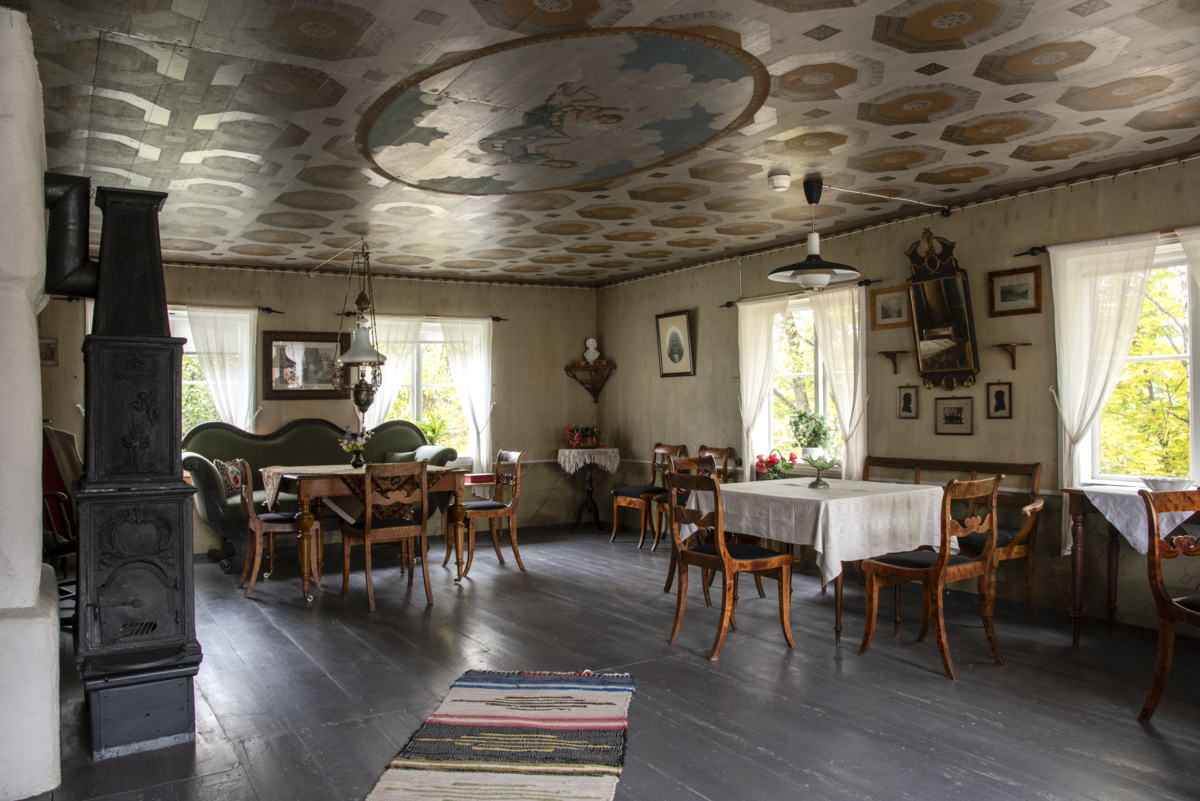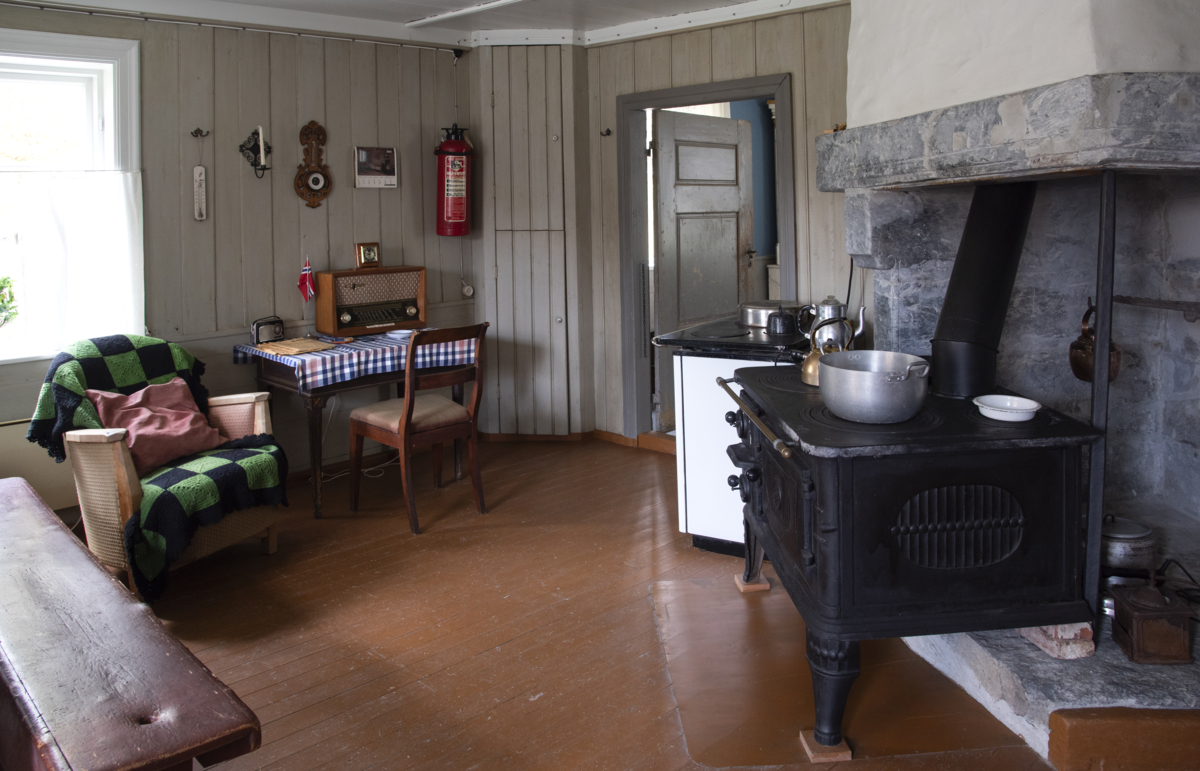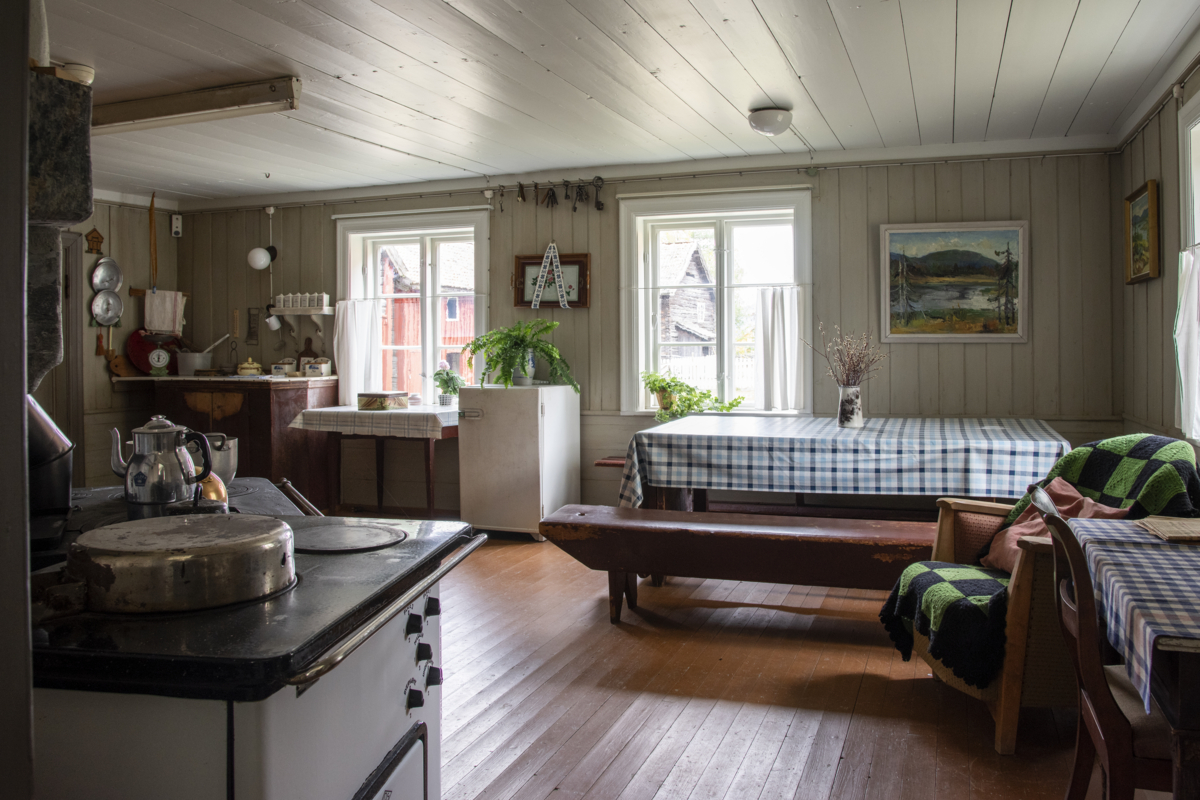
Foto: Tone Iren Eggen Tømte/Maihaugen
Jørstad
Trade, innkeeping, and political hub in Fåberg
Jørstadtunet is located just south of Fåberg Church and was established around 1750. The farm, one of the larger ones in Fåberg, moved closer to the road and church to facilitate trade and lodging services. After 1750, the site became known for its privileged general store and inn with a license to sell liquor. The farm also played a central role in local political life in the 19th century, with both mayors and members of parliament among its users. In 1826, the Faaberg Fire Insurance Company was founded here, and the first meeting of the Fåberg municipal council was held in 1837.
The courtyard consists of several traditional buildings, each with its own function. The main house from the 1700s shows the development through 200 years of use, with rooms like the kitchen, chamber, living room, hall, and bedrooms.
Key Buildings:
The Southern Building: Originally a retirement house, also used as an inn.
The Northern Building: Previously used as a schoolhouse and carpentry workshop, restored before the 1994 Winter Olympics.
The Granary: The farm’s food storage, painted ochre yellow facing the road.
The Meat House: A storage room for food, later used as a chicken coop.
The Bakehouse: Used for baking, brewing, and slaughtering, with space for traveling bakers.
The Barn: Built in 1898, housing stables, a cowshed, and storage for agricultural tools.
The Blacksmith’s Workshop: Essential for repairs and forging, placed away from the courtyard to avoid fire hazards.






